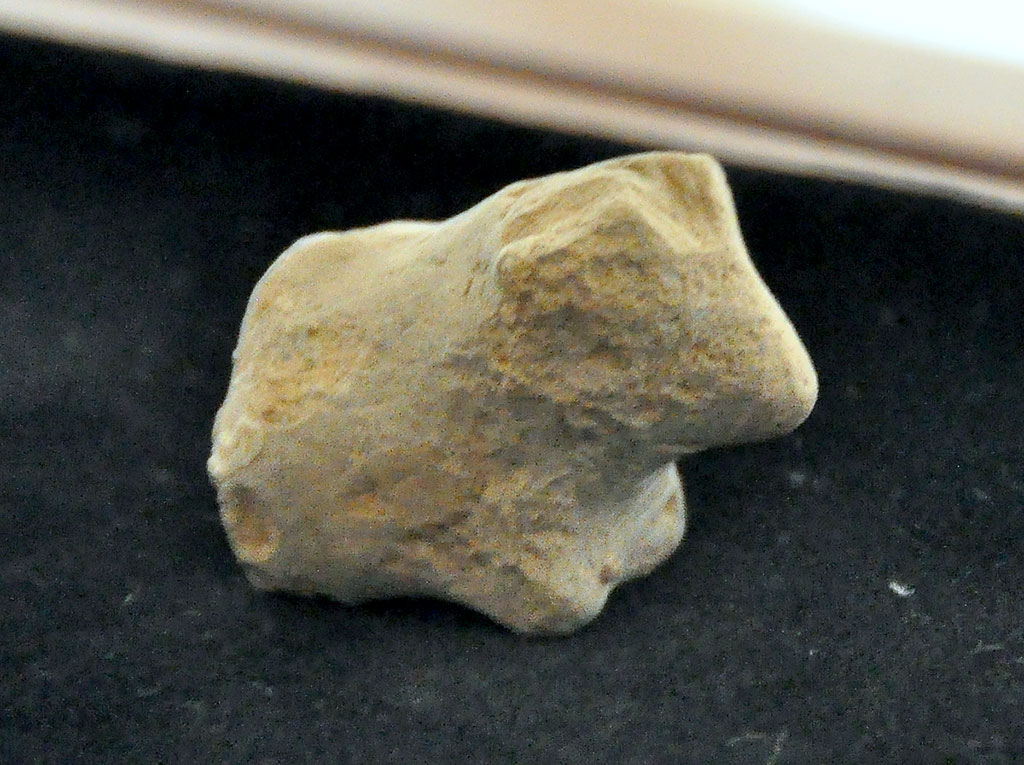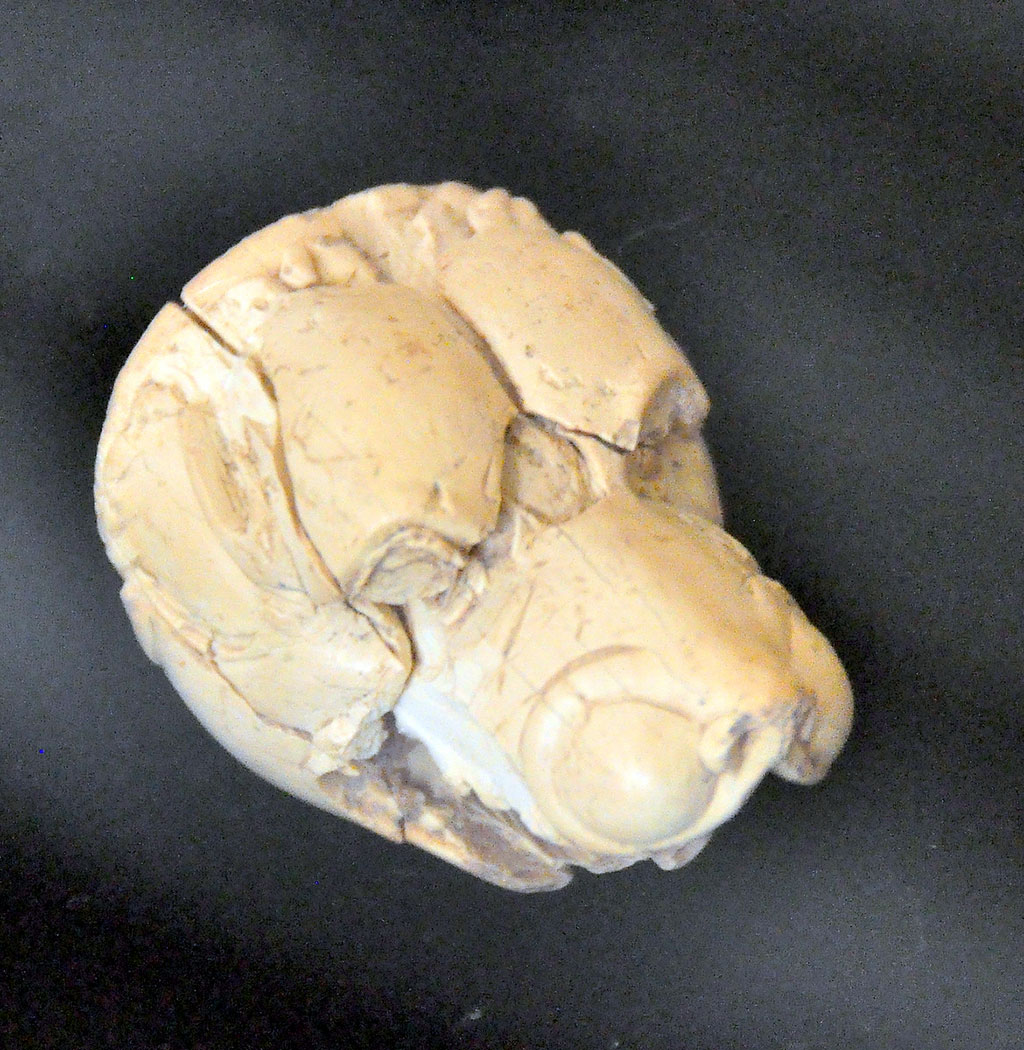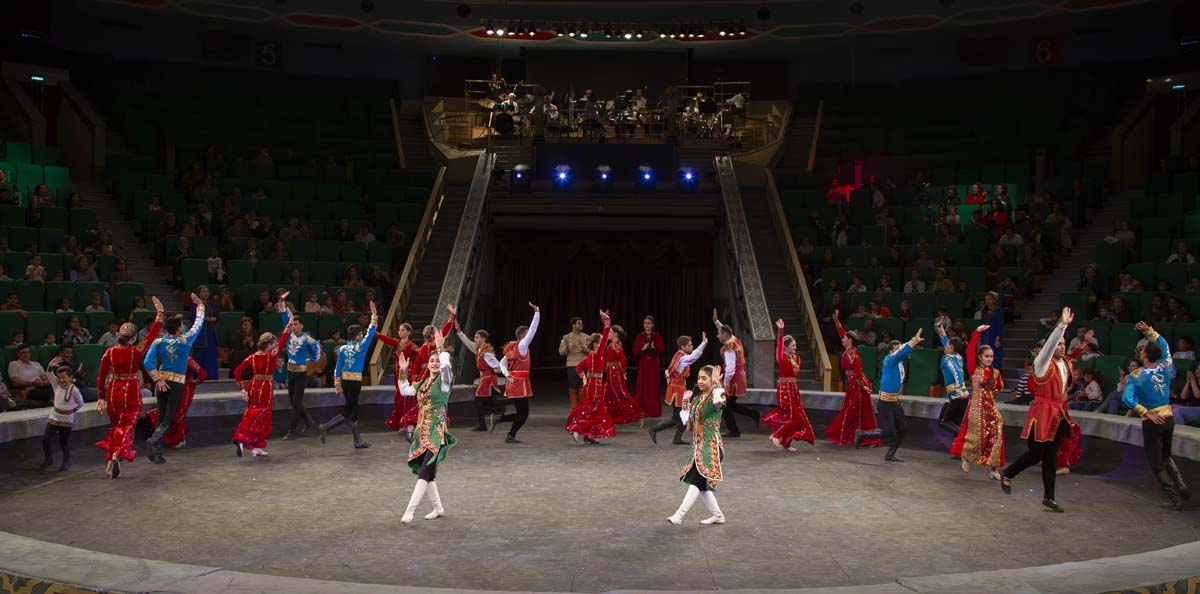Zoomorphic clay figurines, widely developed in the Eneolithic Period (Copper Age) on the territory of Turkmenistan, is often represented by the figures of dogs. It is noteworthy that a large muzzle, a broad chest, strong legs, cropped ears and tail - the characteristic features of modern Alabai can be clearly seen on the relief image.
In ancient times, the role of dogs not only in a farming unit, but also in the religious life of our ancestors, was significant. With the expansion of Zoroastrianism, fire-worshipers honoured dogs. Many churches kept dogs, the graves of these animals found in Gonur-depe prove the respectful attitude towards dogs. A large dog-wolfhound - a protector of a house, a guard of herds, who was highly valued for loyalty, courage and devotion to an owner, occupied a special position. Due to the rather strong material, the clay figures from Yylgynly-depe exhibited at the State Museum of Fine Arts of Turkmenistan were perfectly preserved, despite their impressive age - more than 6,000 years old. We can only admire the skills of ancient craftsmen.
The continuity of traditions of the national culture can be observed in almost 5,000 years. The fragments of a dagger handle cut from a bone that depicts an entertaining battle scene: two fighting cocks, bending their necks and preparing for a throw, their tails raised - a moment, and sharp claws and powerful beaks will be used - were found during the excavations at the Mele-Heyran monument dating back to the late Parthian and Sassanian periods... The bone carver did not miss a single detail in the image of the battle scene, having achieved the compositional dynamics in a small area of the bone.
The head of a dog with an open mouth, a wide muzzle, short ears and redoubtable look is depicted on the top of the scabbard. The combination of two artistic images in one product is not accidental. The author, focusing on militancy, marked the dagger as a cold weapon, emphasizing its purpose. If we consider that various superstitions and mythology were very popular in antiquity, then one can understand the author's message.
Historical traditions in folk art can be traced in artifacts for millennia, their deep roots are bounded with the modern Turkmen art. Sculptural compositions, numerous picturesque images of the animal world representatives prove this.
In ancient times, the role of dogs not only in a farming unit, but also in the religious life of our ancestors, was significant. With the expansion of Zoroastrianism, fire-worshipers honoured dogs. Many churches kept dogs, the graves of these animals found in Gonur-depe prove the respectful attitude towards dogs. A large dog-wolfhound - a protector of a house, a guard of herds, who was highly valued for loyalty, courage and devotion to an owner, occupied a special position. Due to the rather strong material, the clay figures from Yylgynly-depe exhibited at the State Museum of Fine Arts of Turkmenistan were perfectly preserved, despite their impressive age - more than 6,000 years old. We can only admire the skills of ancient craftsmen.
The continuity of traditions of the national culture can be observed in almost 5,000 years. The fragments of a dagger handle cut from a bone that depicts an entertaining battle scene: two fighting cocks, bending their necks and preparing for a throw, their tails raised - a moment, and sharp claws and powerful beaks will be used - were found during the excavations at the Mele-Heyran monument dating back to the late Parthian and Sassanian periods... The bone carver did not miss a single detail in the image of the battle scene, having achieved the compositional dynamics in a small area of the bone.
The head of a dog with an open mouth, a wide muzzle, short ears and redoubtable look is depicted on the top of the scabbard. The combination of two artistic images in one product is not accidental. The author, focusing on militancy, marked the dagger as a cold weapon, emphasizing its purpose. If we consider that various superstitions and mythology were very popular in antiquity, then one can understand the author's message.
Historical traditions in folk art can be traced in artifacts for millennia, their deep roots are bounded with the modern Turkmen art. Sculptural compositions, numerous picturesque images of the animal world representatives prove this.








